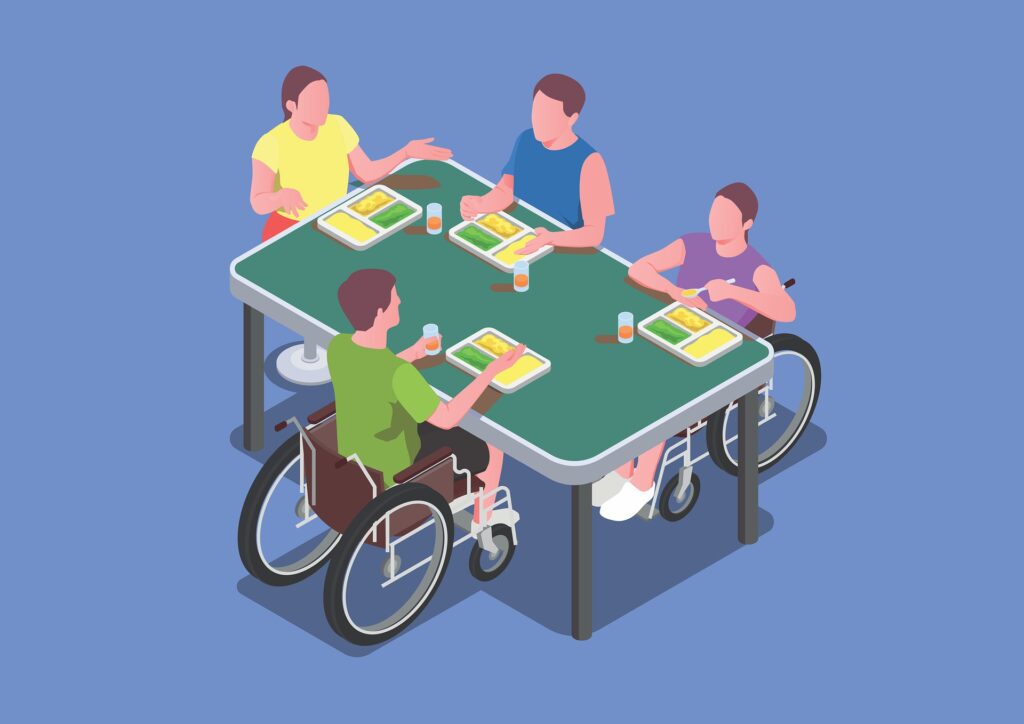The Paralympic Games stand as a testament to the extraordinary determination, resilience, and strength of athletes with disabilities. This prestigious event showcases incredible athletic performances, where competitors push their limits in pursuit of excellence. Athletics, one of the most prominent sports in the Paralympics, offers a platform for athletes of varying impairments to demonstrate their skills in track and field events. Let’s dive into the fascinating world of athletics at the Paralympics, exploring its significance, events, and the inspiring athletes who make it a thrilling spectacle.
The Importance of Athletics in the Paralympics
Athletics has always held a central place in the Paralympic Games due to its wide variety of events that cater to a broad range of disabilities. From track races to field events, athletes with physical, visual, and intellectual impairments have the opportunity to compete at the highest level. The inclusion of athletics in the Paralympics helps to highlight the potential of these athletes, breaking down barriers and challenging societal perceptions of disability.
Athletics is one of the sports that offers the most extensive medal opportunities in the Paralympics, with events categorized by different classifications based on the type and level of impairment. These classifications ensure fair competition, allowing athletes to compete against others with similar abilities. This level playing field enables us to witness performances that are as intense and competitive as those seen in the Olympic Games.
Track Events: Speed, Endurance, and Precision
One of the most exciting aspects of athletics in the Paralympics is the range of track events. From short sprints to long-distance races, athletes showcase their speed, endurance, and tactical precision on the track. The classification system divides track events into categories such as T11-T13 (for visually impaired athletes), T33-T38 (for athletes with cerebral palsy), and T42-T47 (for athletes with limb deficiencies or amputations).
Sprinting
Sprinting events, ranging from 100 meters to 400 meters, are some of the most thrilling competitions in the Paralympics. Athletes explode off the starting blocks, with their eyes set on the finish line, pushing their bodies to the limit. For visually impaired athletes, sprinting involves the use of guides who run alongside them, ensuring they stay on course while maintaining a high speed. The coordination between the athlete and the guide is crucial, and the bond they share is a remarkable display of teamwork.
Middle and Long-Distance Races
Middle and long-distance races, ranging from 800 meters to 5,000 meters, test athletes’ stamina and strategic thinking. These races require a delicate balance of speed and endurance, with athletes pacing themselves for the right moment to surge ahead. Wheelchair racers, in particular, excel in these events, where their upper body strength and technique propel them to incredible speeds. The athletes’ resilience and mental fortitude are on full display as they push through the physical demands of these grueling races.
Relay Races
Relay races are another highlight of track events in the Paralympics. Teams of athletes work together to complete the race, with baton exchanges requiring precise timing and coordination. The camaraderie and collective effort in relays make these events exhilarating to watch, as teams push each other to achieve their best. Whether it’s a 4×100 meter sprint or a 4×400 meter endurance race, relay events showcase the power of teamwork in overcoming challenges.
Field Events: Strength, Precision, and Skill
Field events in Paralympic athletics are a true test of strength, precision, and skill. These events include throwing disciplines such as shot put, discus, and javelin, as well as jumping events like long jump and high jump. Athletes in these events are categorized based on their impairments, ensuring fair competition and the opportunity to shine in their chosen discipline.
Throwing Events
Throwing events require immense upper body strength and control. Athletes compete in shot put, discus, and javelin, with classifications based on whether they compete standing, seated, or in a wheelchair. In seated events, athletes are strapped into specially designed chairs, allowing them to generate maximum force with their throws. The technique and power displayed in these events are awe-inspiring, with athletes consistently pushing the limits of what is physically possible.
Jumping Events
Jumping events, including long jump and high jump, require precision, timing, and agility. Athletes with limb impairments or amputations use prosthetics to help them achieve incredible heights and distances. In visually impaired categories, athletes rely on auditory cues from their guides to help them time their jumps accurately. The determination and focus required to excel in these events are evident, as athletes soar through the air in pursuit of victory.
The Role of Technology in Paralympic Athletics
The advancement of technology has played a significant role in enhancing the performance of Paralympic athletes, particularly in athletics. From prosthetic limbs to specialized wheelchairs, technological innovations have empowered athletes to reach new heights in their respective events. Prosthetic running blades, for example, have revolutionized sprinting events for athletes with lower limb amputations, enabling them to compete at speeds comparable to able-bodied sprinters.
Wheelchair athletes benefit from cutting-edge designs that prioritize aerodynamics and efficiency, allowing them to generate more speed and power. These technological advancements not only improve performance but also contribute to the inclusivity of the Paralympic Games by leveling the playing field for athletes with different impairments.
Inspiring Athletes and Memorable Moments
Paralympic athletics has produced countless inspiring athletes and memorable moments that have left an indelible mark on the world of sports. Athletes such as Tatyana McFadden, a wheelchair racer who has won multiple Paralympic gold medals, and Markus Rehm, a long jumper with a prosthetic leg who has consistently broken world records, are just a few examples of the incredible talent on display.
These athletes, through their dedication and achievements, challenge preconceived notions of what is possible and inspire future generations to pursue their dreams, regardless of the obstacles they may face. The Paralympics serve as a powerful reminder that sport has the ability to unite people from all walks of life, transcending physical limitations and celebrating the human spirit.
Conclusion: Celebrating Excellence in Paralympic Athletics
Athletics at the Paralympics is a celebration of human potential, resilience, and the pursuit of excellence. The dedication and determination of these athletes inspire us all, showing that with hard work and perseverance, anything is possible. As the Paralympics continue to grow in prominence, the impact of athletics will remain a cornerstone of the games, highlighting the incredible achievements of athletes with disabilities.
For anyone who is passionate about sports or simply looking for inspiration, the world of Paralympic athletics offers a wealth of stories that demonstrate the power of the human spirit. Each race, jump, and throw is a testament to the athletes’ strength, determination, and unwavering commitment to their craft.



